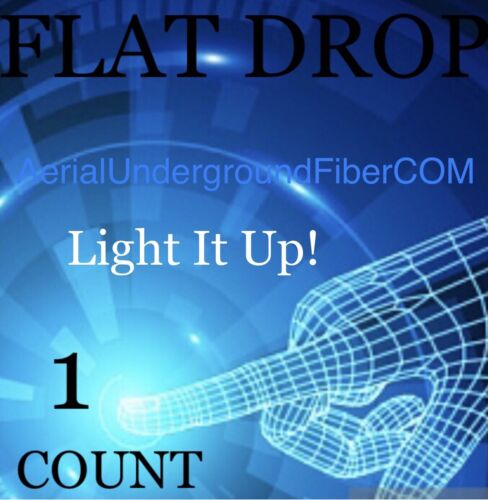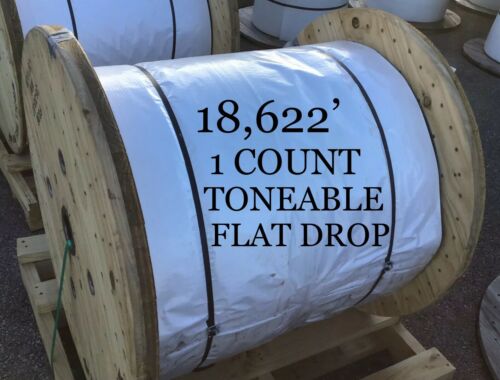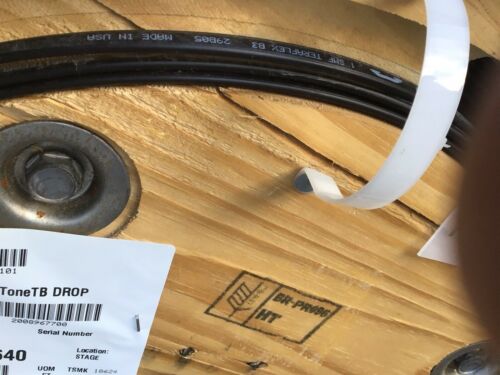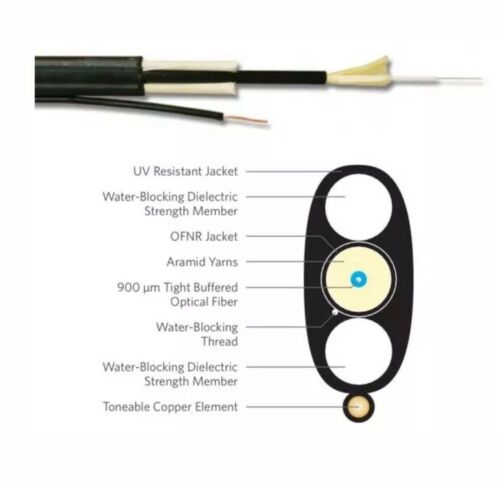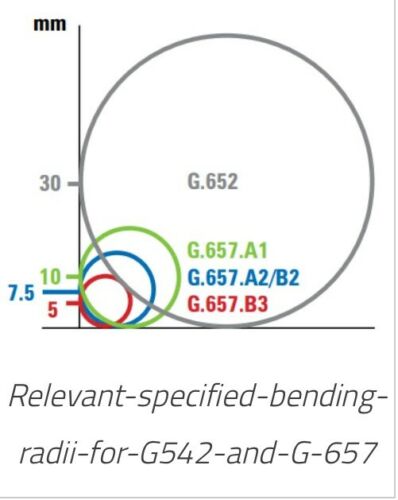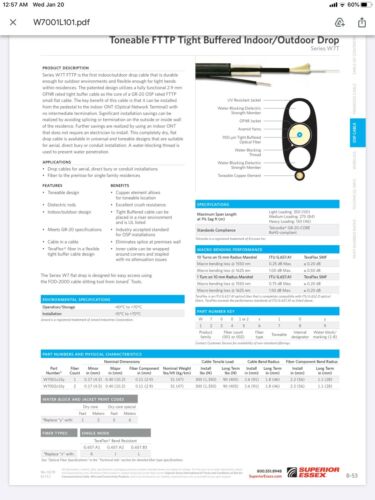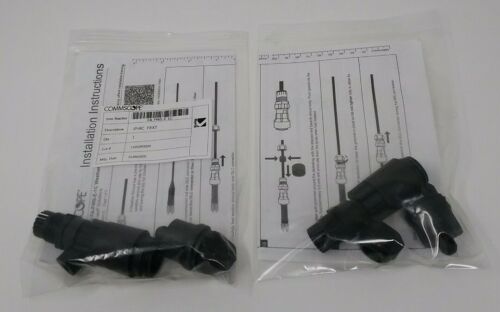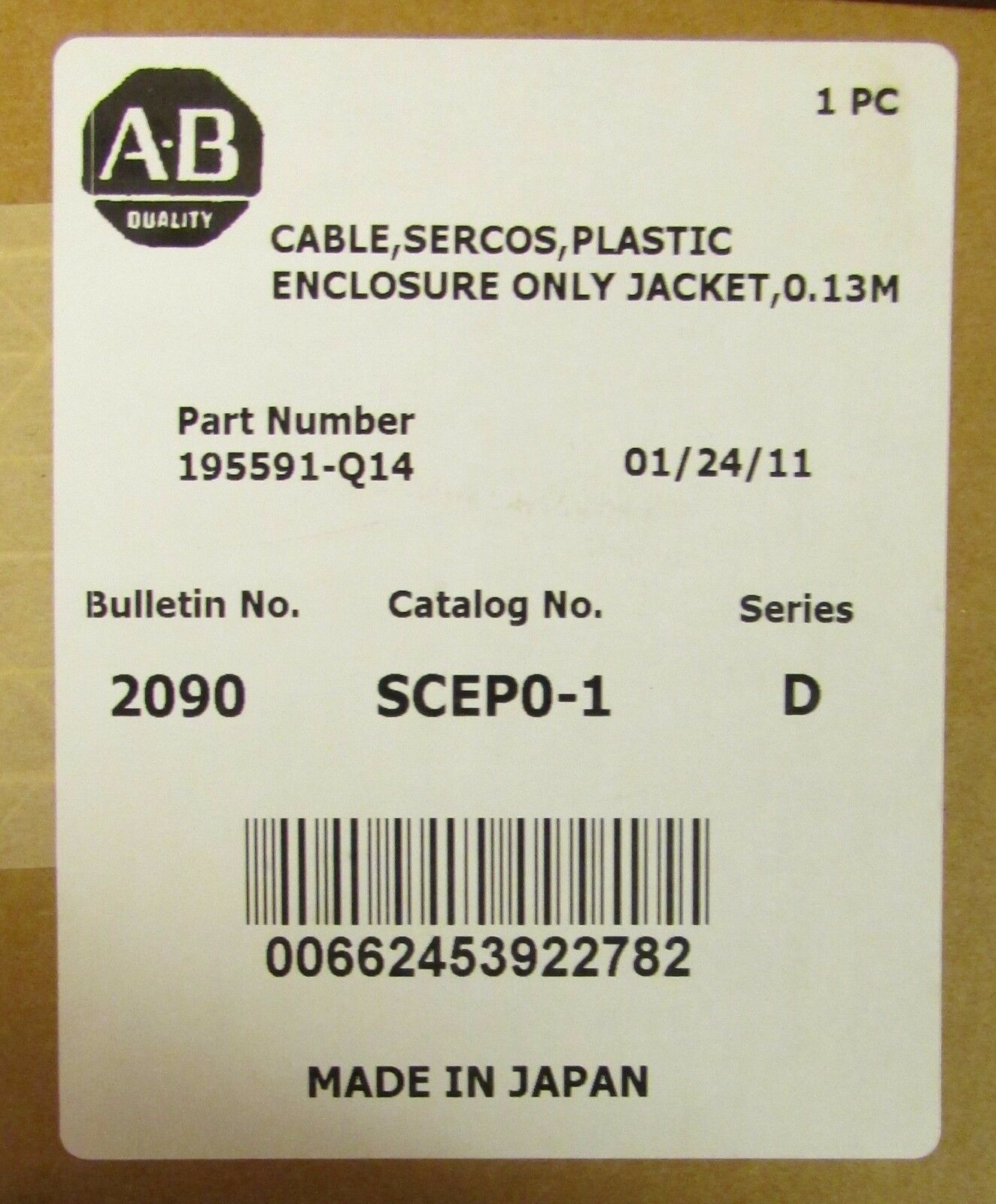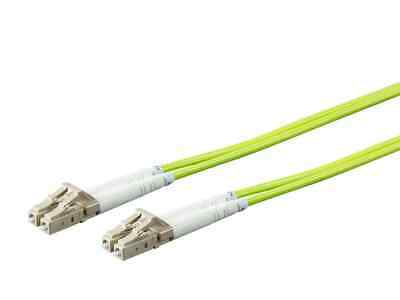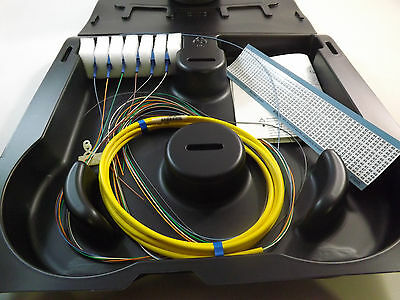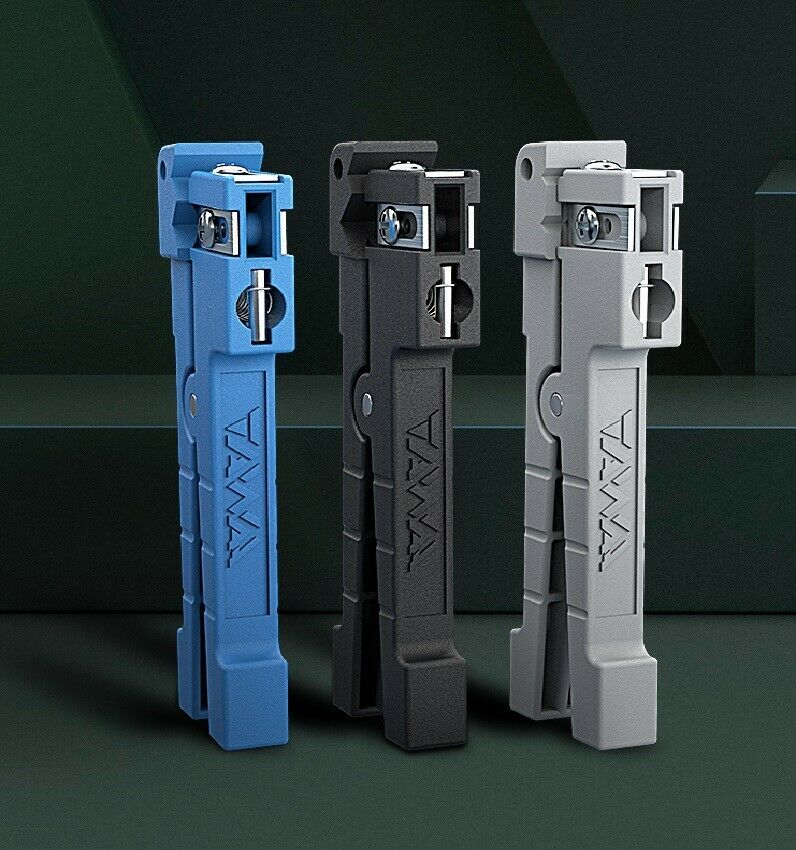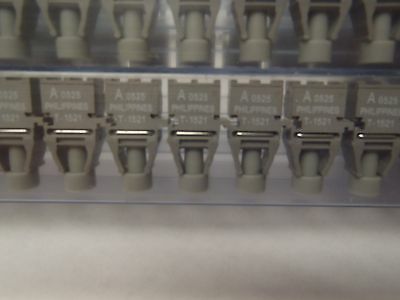-40%
18622’ 1 Count Toneable Flat Drop BIF Fiber Cable FTTP Tight Buffered In/Outdoor
$ 3323.76
- Description
- Size Guide
Description
Thank You for visitingAerialUndergroundFiberCom
Inventory is in constant rotation if You have a material need You are not seeing posted feel free to reach out and I will do my best to take care of Your needs whether it is Fiber Optic Cable or any related materials.
Shipping Rate is for non restricted Business Addresses with loading dock or forklift within Continental United States only I am happy to quote elsewhere or for additional services such as lift gate or residential.
18,622 Feet of 1 Count Toneable Tight Buffered Indoor Outdoor Flat Drop Fiber BIF G.657B3 FTTP FTTH
Series W7T W7001L101
Product Description
Series W7T FTTP is the first indoor/outdoor drop cable that is durable enough for outdoor environments and flexible enough for tight bends within residences. The patented design utilizes a fully functional 2.9 mm OFNR rated tight buffer cable as the core of a GR-20 OSP rated FTTP small flat cable. The key benefit of this cable is that it can be installed from the pedestal to the indoor ONT (Optical Network Terminal) with no intermediate termination. Significant installation savings can be realized by avoiding splicing or termination on the outside or inside wall of the residence. Further savings are realized by using an indoor ONT that does not require an electrician to install. This completely dry, flat drop cable is available in universal and toneable designs that are suitable for aerial, direct bury or conduit installation. A water-blocking thread is used to prevent water penetration.
Applications
• Drop cables for aerial, direct bury or conduit installations
• Fiber to the premise for single family residences
Features
• Toneable design
• Dielectric rods
• Indoor/outdoor design
• Meets GR-20 specifications
• Cable in a cable
• TeraFlex fiber in a flexible tight buffer cable design
Benefits
• Copper element allows for toneable location
• Excellent crush resistance
• Tight Buffered cable can be placed in a riser environment and is UL listed
• Industry accepted standard for OSP installations
• Eliminates splice at premises wall
• Inner cable can be wrapped around corners and stapled with no attenuation issues
The Series W7 flat drop is designed for easy access using the FOD-2000 cable slitting tool from Jonard® Tools.
The roll out of fibre-to-the-home (FTTH) networks has been of global importance since the early 2000s, requiring a dedicated single-mode fibre cable Recommendation. As today’s FTTx networks push optical fiber to single-family homes and multiple dwelling units, they require smaller distribution cabinets and compact fiber management systems, where fiber is subject to a greater degree of bending. These conditions have put more stringent demands than ever before on the bend performance of single-mode fibers. However, the need to maintain a very high degree of mechanical reliability hasn’t changed. An understanding of the design and performance of bend-optimized fiber will help the user make a more informed decision in specifying a fiber that can support tighter bends but still be very reliable.
Q: What is G.657 Optical Fiber?
A: ITU T G.657 Fiber Characteristics of a bending-loss insensitive single-mode optical fibre and cable for the Access network, the ITU recently adopted the G.657 standard to describe single-mode fibers with improved bending performance that are suitable for use in access networks.
Q: What is the Benefits for ITU-T G 657 optical fiber?
A: • ITU-T G.657 optical fibre cable offers flexible characteristics for easier deployment in streets, buildings and homes.
• ITU-T G.657 optical fibre cable reduces the roll-out cost for operators and the total cost of ownership (TCO) of an FTTH network. Increased flexibility in optical fibre cables, allowing improved installation in tight corners of buildings. Smaller cabinets, pedestals, enclosures and terminations,which are important where space is at a premium. (e.g., in apartment buildings). More engineer-friendly installation leading to less re-work.
Q: How many categories for The ITU-T G.657 optical fibers.
A: There are two categories for ITU-T G 657 optical fiber, the detailed information as follow:
• Category A fibres for Access networks. Class A fibers are suitable for use from 1260 to 1625 nm and are actually a subset of G.652D (low water peak) fibers. G.657 Class A fibers have tighter dimensional tolerances than G.652D fibers, for improved connectivity. The attributes of these class A fibers are optimized for reduced macrobend loss while their specifications for attenuation, chromatic dispersion, and PMD remain the same as specified in G.652D.
• Category B fibres for short distances at the end of Access networks in bending-rich environments (e.g., buildings). Class B fibers are suitable for transmission at 1310, 1550 and 1625 nm for restricted distances that are associated with in-building transport of signals. The class B fibers are capable of low macrobend losses at very tight bend radii, but can have different splicing and connection properties than G.652 fibers due to their varied designs and broad range of MFD values.
Q: How many sub-category for both category A and category B, and what is the minimum bending radius?
A: Category A: G.657.A1 and G.657.A2, 10mm and 7.5mm
Category B: G.657.B2 and G.657.B3, 7.5mm and 5mm
Category A1 is largest at 10mm, and Category B3 is the smallest at 5mm.
Q: What is bend insensitive (or bend optimized) fiber?
A: Bend insensitive (or Bend optimized) fiber is designed for use in FTTx and premises applications to minimize the effects of increased attenuation resulting from macrobends and microbends in single-mode fiber. Optimized bend performance is valuable in many cable and connectivity applications including low-count cables, small enclosures, or any application where small bend radii may be encountered. Bend-optimized fiber, The bend insensitive optical fibres can be coiled into a 10 mm radius loop with
Q: What’s the difference between macrobending and microbending?
A: Optical fibers would not be practical if they had to be kept perfectly straight to guide light. However, deviations from a straight path (“bends”) can cause light to scatter and escape from the core of the optical fiber. Bends fall into two categories.
Macrobends are bends that are large enough to be seen by the human eye; microbends are microscopic deviations along the fiber axis. A macrobend could be caused by the routing of a jumper in a patch panel; a microbend could result if fiber is squeezed by cable buffer or jacket material as it contracts at very low temperatures. Both types of bends can result in increased attenuation that can degrade system performance. A bend-optimized product in both types of bend performance, enabling smaller enclosures and novel cable designs.
Q: For bend-sensitive applications, are there factors beyond bend-optimization that must be considered?
A: Bend performance is just one of several parameters that must be considered when designing an optical fiber for bend-sensitive applications; other key parameters include bandwidth, reliability, and compatibility with the installed base. In a well-designed fiber, these properties must be balanced to create a product that will provide the most value to the end user.
Most important is that the fiber is based on a proven design that is fully compliant with International Telecommunications Union (ITU) standard G.652D for single-mode fiber. This ensures that the fiber will compatible with existing transmission equipment. Also important are low polarization mode dispersion (PMD), excellent attenuation from 1260 nm to 1625 nm even in tight bends, and zero water peak to ensure that the product is ready for any future bandwidth upgrades. And very low splice loss when splicing either to itself or to the existing fiber base is, of course, essential.
The mechanical reliability of the fiber under reduced bends is another important concern. Be wary of any end insensitive fiber whose design allows for bends that are so tight that they threaten the mechanical reliability of the fiber. Low loss in a very tight bend (say, 5 to 7 mm in radius) may look like good performance during installation, but a bend this tight could result in a catastrophic fiber break that will disrupt service in the future and be difficult to repair.
Q: Can I splice a ITU-T G.657 fiber with an existing outside plant base composed mostly from matched cladding ITU-T G.652 fiber?
A: Yes. ITU. T G657 (Both Category A and category B) was designed for excellent splice performance both to itself as well as to the embedded base of single-mode fiber. Because this is probably the most important concern that users have, The bend-insensitive fiber with excellent geometric attributes designed to yield consistently low splice loss.
Q: When should I consider using bend-optimized fiber in my network?
A: As fiber pushes closer to the home, there are many situations in which a bend-optimized fiber can improve system performance. Some examples:
• Low count cables: As the fiber count within cables decreases, they are more likely to experience bends of 30mm radius or less.
• High density connectivity:The improved microbending and macrobending performance and full spectrum capability make them an ideal choice for fiber optic patch cords in demanding applications such as central office and distribution cabinets.
• Small enclosures:The design of more compact enclosures for FTTx applications has been made possible by the superior macro-bend performance of these fibers, specifically the ability to have bends with radii as small as 10mm.
• Low temperature applications:The improved micro-bending of bend-optimized fiber boosts the performance of patch cords and cables at temperatures as low as -40°C.
• Compact cable designs:The use of bend-optimized fibers results in low attenuation after cabling in the small-diameter designs of today’s premises cables and blown fiber units.
• In-building applications, including drops: Bend-optimized fiber supports this application without the disadvantages of a G.657B fiber.
Q: What are the key parameters to specify in a bend-optimized fiber?
A: The best value in a system is a fiber that has optimized bend performance at high levels of mechanical reliability. There are several key design features that need to be considered:
• Good bend performance (without jeopardizing long term reliability)
• Low loss splice compatibility
• High mechanical reliability
• Zero water peak
• Low PMD
• G.652D compliant (fully compliant to the embedded base of single-mode fiber)
Q: Which design is best among different design of bending insensitive optical fibers?
A: In general, there are two ways to improve the bending properties of single-mode fiber. The first is to increase the refractive index of the core, and the second is to change the refractive index of the cladding. Of the two, the simpler method is to increase the core index. However, this very simple design has several shortcomings. The main problem is that to get the improved bend performance and keep the fiber single-moded, the MFD must be reduced (thus, this is often referred to as the “small core” option). Limits on the range of acceptable MFD for standard single-mode fiber result in two weaknesses for fibers in this category: marginal improvement in bend performance and poor splice performance due to the small core.
